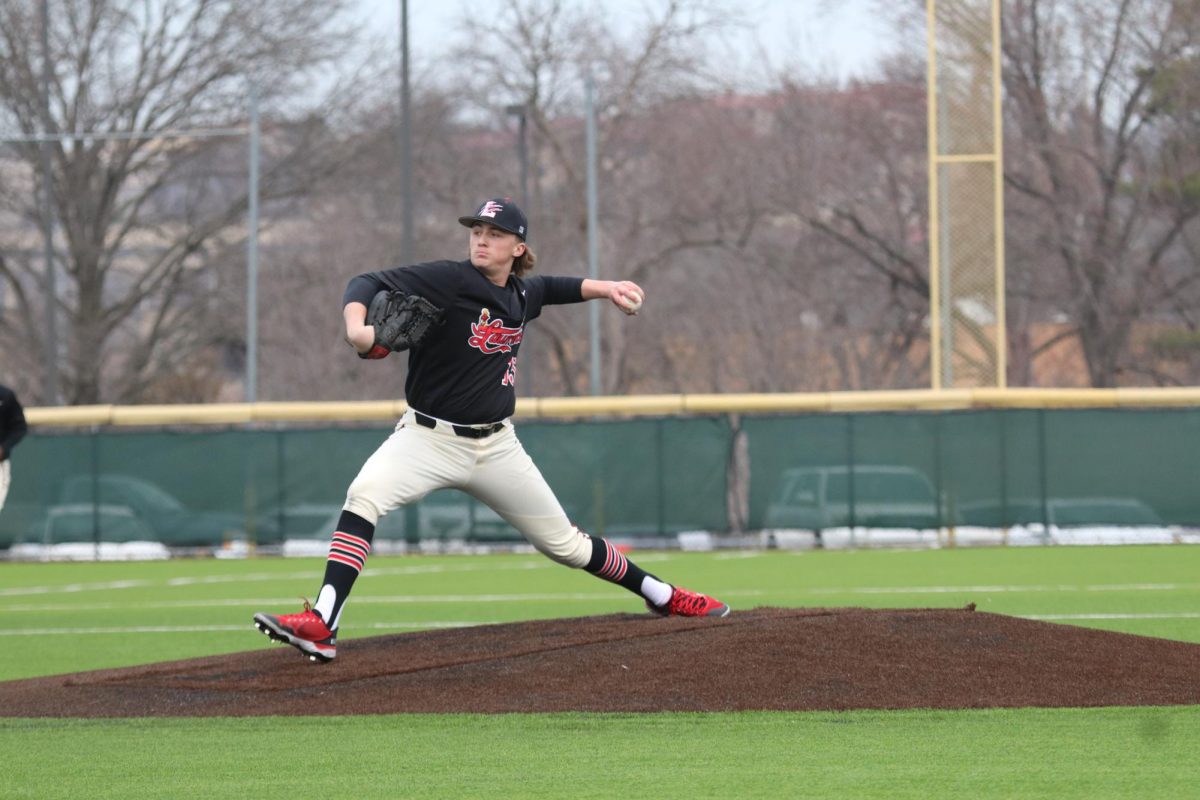After years of negativity and denied proposals, the KSHSAA Board of Directors has finally approved an increase in baseball games per season.
On Sept. 13, during their first meeting of the year, the Board voted 42-17 to approve the measure. This comes after the Board voted against the same measure in the spring 33-32. After nearly 60 years of playing only 20 games per year, Kansas high school baseball and softball teams can now play up to 26 games. According to LHS coach Brad Stoll, this measure is a huge step forward for the sport in Kansas.
“I think adding six games, that’s almost 30 more at bats a year for each kid, it’s just more opportunity for our kids to get better,” Stoll said. “That’s really what we need. It gets us a little more on par with our neighboring states.”
The primary reason to increase game count was to make Kansas athletes more competitive with players from surrounding states. In Missouri, the regular season is 26 games. In Nebraska and Oklahoma, they play well over 30 games. Iowa plays 40. Stoll pointed out that college recruiting is often heavily based on experience.
“If a college recruiter is evaluating a shortstop from Lawrence High School and a shortstop from Liberty North, well, the Liberty North shortstop is getting almost 50% more games,” Stoll said. “So who do they want? They want the kid who’s played more baseball.”
Unlike many other sports, high school baseball is still very unlike collegiate baseball. Most high school players only play about 40% of the number of games per season that they will play in college. But senior Brooks Jones agreed that every game helps.
“In college, it’s baseball every single day of the week,” Jones said. “Even in the fall, you’re always doing baseball. You’re always going to practice, you’re always working out. So I feel like it helps out a little bit to get ready for college.”
For years, Kansas coaches have been working to implement this change. However, the idea has received push back from many sides. Smaller schools often can’t fill out a full 20 game season, meaning they don’t have the personnel to pitch 26 games. There are also concerns about balancing other spring sports and instructional time. Stoll described a long process to convince the state to make this change this year.
“You need to get softball on board, you need to talk to your ADs, you need to talk to your principals, so we would split up and talk to different classifications,” Stoll said. “For instance, Coach Hill over at Free State and I zoomed with 3A and 4A coaches across the state, and answered questions, and kind of molded our proposal off of the feedback from the coaches.”
Ultimately the perspective that small schools aren’t required to schedule any more games won the day. But for big schools, the freedom to play more baseball is welcome. Stoll has already scheduled all 6 additional games.
“I actually had five of the six already scheduled before they voted on it. Once they voted it in, we just had to agree that it was going to happen,” Stoll said. “I already had five of them because I didn’t want to scramble and find opponents that I didn’t really want to play.”
One factor that all teams will have to deal with is keeping their pitcher’s arms rested. The increased game count will most likely translate to a larger workload for starting pitchers in particular. Stoll pointed to another rule change that will help mitigate the issue.
“In conjunction with this new rule, last spring they allowed us eight dates to work with pitchers, to develop arms and take care of them,” Stoll said. “It’s kind of like pitchers and catchers in the big leagues. They call it on-ramping, just getting them ready to go.”
Jones agrees that with proper precautions, he will be able to stay healthy throughout the season.
“The main thing is just keeping my pitch count low, keep arm care going well and just making sure I’m not going too many innings,” Jones said.
After 60 years of no change, Stoll echoed the feelings of most everybody involved in high school baseball.
“It’s about damn time.”






